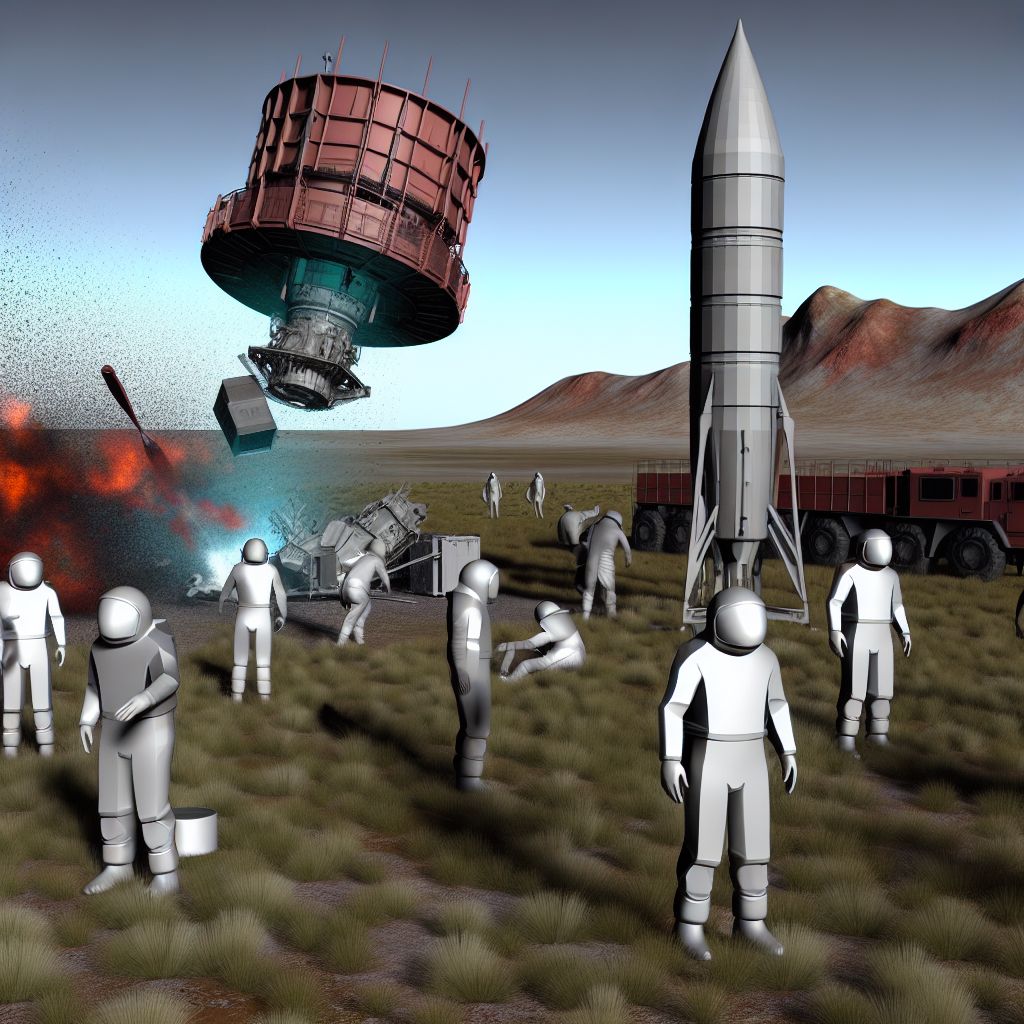Deutsch: Ausstoßung / Español: Eyección / Português: Ejeção / Français: Éjection / Italiano: Espulsione
Ejection in the Space industry context refers to the process or action of expelling or releasing a spacecraft, satellite, or any other payload from a Launch Vehicle or parent spacecraft. This can occur during various phases of a space mission, such as deploying satellites into orbit, ejecting landers or rovers toward a Celestial body, or discarding used stages of a rocket. Ejection is a Critical Operation that must be precisely timed and executed to ensure that the payload reaches its intended orbit, trajectory, or landing site. The mechanism and method of ejection vary depending on the mission Design, the type of payload, and the specific requirements of the operation.
Description

Ejection mechanisms in space missions are designed to separate payloads from their carrier vehicles safely and accurately. This can involve explosive bolts, springs, Pyrotechnic devices, or robotic arms, among other technologies. The process is meticulously planned and often automated to occur at a specific time or condition during the mission. For Interplanetary missions, ejection might also refer to the process of leaving a planet's orbit or gravitational influence, using a combination of Propulsion and gravitational assists.
Application Areas
Ejection mechanisms are employed in a variety of contexts within the space industry, including:
- Satellite Deployment: Launch vehicles eject satellites into their designated orbits.
- Deep Space Missions: Spacecraft may eject smaller probes, landers, or rovers toward their target celestial bodies.
- Stage Separation: Rockets eject spent stages to shed Weight and continue Ascent with fresh engines and Fuel.
- Sample Return Capsules: Missions returning samples to Earth may eject a capsule containing the samples for re-entry and recovery.
Well-Known Examples
- CubeSat Deployers: Small satellites, such as CubeSats, are often ejected from a deployer mechanism aboard the International Space Station (ISS) or a launch vehicle.
- Mars Rovers: The Mars Science Laboratory mission, which delivered the Curiosity rover to Mars, involved several ejection processes, including the separation of the cruise stage and the entry capsule's ejection of the Heat shield.
- Apollo Command Module: The command module ejected the service module before re-entering Earth's Atmosphere during return missions.
Treatment and Risks
Successfully executing an ejection involves addressing numerous challenges and risks, such as:
- Timing and Accuracy: Precise control over the timing and trajectory of the ejection is crucial to ensure the payload reaches its intended destination.
- Mechanical Failure: The failure of ejection mechanisms can lead to mission failure, making reliability a critical concern.
- Collision Avoidance: Ensuring that ejected components do not collide with the payload or other space assets.
Similar Terms or Synonyms
Summary
Ejection is a fundamental aspect of space missions, involving the controlled release of payloads, stages, or other components from a spacecraft or launch vehicle. This process is vital for satellite deployment, interplanetary Exploration, and the safe return of samples to Earth, requiring Precision Engineering and careful planning to achieve mission success.
--
Related Articles to the term 'Ejection' | |
| 'Space launch operations' | ■■■■■■■■■ |
| Space launch operations refer to the series of activities, procedures, and logistics involved in preparing . . . Read More | |
| 'Braking' | ■■■■■■■■■ |
| Deutsch: Bremsen / Español: Frenado / Português: Frenagem / Français: Freinage / Italiano: Frenata . . . Read More | |
| 'Rocket launch' | ■■■■■■■■■ |
| Rocket launch: Rocket Launch in the space industry context refers to the event and process of propelling . . . Read More | |
| 'Take-off' | ■■■■■■■■■ |
| Take-off in the space industry context refers to the initial phase of a spacecraft\'s launch, where the . . . Read More | |
| 'Launch' | ■■■■■■■■ |
| Launch: A launch is the first part of the flight of a rocket when it leaves the ground for orbital spaceflights, . . . Read More | |
| 'Orbit Correction' | ■■■■■■■■ |
| Orbit Correction: Orbit correction in the space industry refers to the adjustments made to a spacecraft’s . . . Read More | |
| 'Payload Integration' | ■■■■■■■■ |
| Payload Integration in the space industry context refers to the process of preparing, assembling, testing, . . . Read More | |
| 'Finalization' | ■■■■■■■■ |
| Finalization in the space industry refers to the concluding phase of a project, mission, or system development . . . Read More | |
| 'Launch Vehicle' | ■■■■■■■■ |
| Launch Vehicle in the space industry refers to a rocket or spacecraft specifically designed to propel . . . Read More | |
| 'Ballistic' | ■■■■■■■ |
| Ballistic in the aerospace context refers to the motion of an object that is subject to the force of . . . Read More | |
